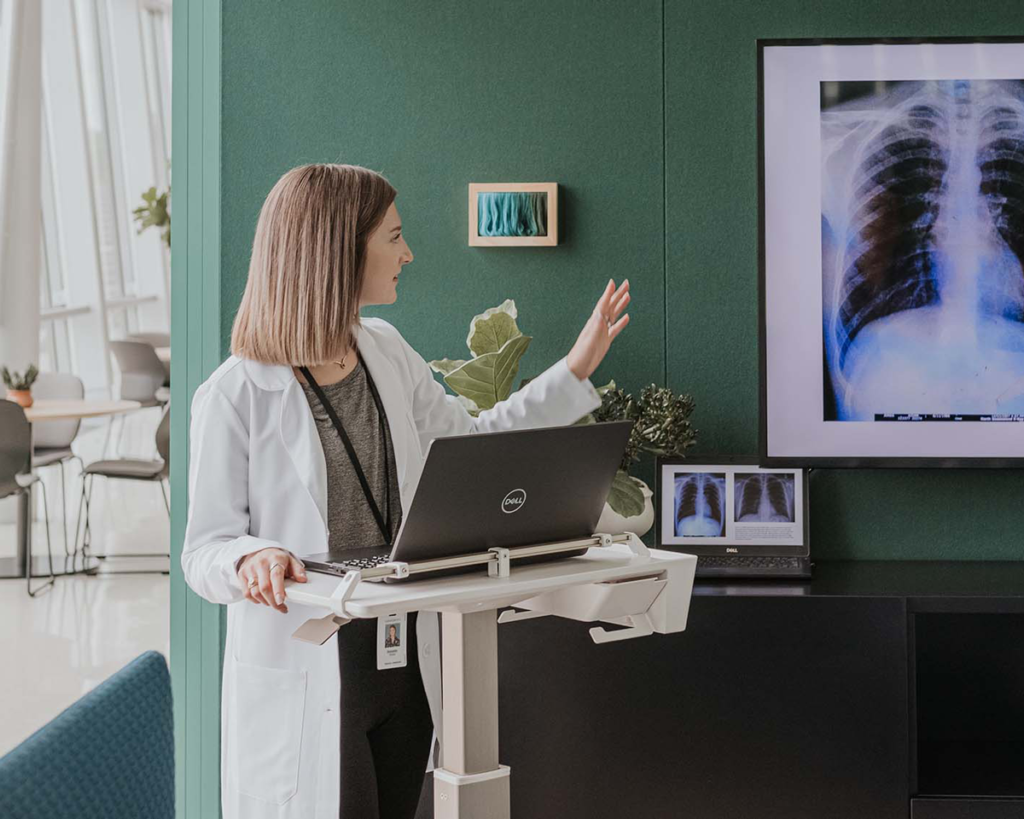The Movement to Build or Redesign Carbon Neutral Healthcare Spaces
The constant hum and daily operations of the healthcare industry are catalysts to better understand, and ultimately reduce, facility carbon footprints. In fact, new studies show that interior designers have a much greater impact on climate change than they ever imagined.
Protecting People and the Environment
People are paying attention to what organizations and systems are doing to help protect them, their loved ones, and the environment. Intentional healthcare design and construction not only boost patient and employee retention, morale, and trust, but also support the movement to build or redesign carbon neutral spaces. Carbon neutral means that any carbon dioxide (CO2) released into the atmosphere from a company’s activities is balanced by an equivalent amount being removed.
According to the University of California San Francisco Magazine, there are five ways healthcare institutions are responding to climate change and working to reduce their carbon footprints.
- Designing health systems that minimize the need for hospital care and allow patients to stay close to home
- Integrating solar power and other renewable energy sources into facility design
- Building infrastructure that is more resilient to natural disasters
- Incorporating natural ventilation, efficient lighting, and water usage
- Pursuing low-carbon electrical planning
Carbon Neutral Strategies in Design
Flexible, lean interior construction and furnishings are becoming primary enablers for health systems to engage in carbon neutral strategies—which have the potential to lead to a Net Zero carbon future. Net Zero means consuming only as much energy as is produced, achieving a sustainable balance between water availability and demand, and eliminating solid waste sent to landfills.
To clarify, an actual physical building and its contents are considered embodied carbon notwithstanding the operational carbon needed to function over time—like the use of energy from machines, electricity, waste, etc. In an article by ARUP – Global Advisory, Design, Planning & Engineering Consultancy, a series of simple steps taken early in the design process can dramatically reduce both the embodied and operational carbon footprint of newly built and refurbished hospitals.
Build Nothing
The first major step in carbon neutral planning is to build nothing in terms of new structures. This step is all about repurposing and renovating existing real estate. As the need for owned or leased properties for administration space continues to decline—due to the work from anywhere environment—these spaces are instead being adapted for co-located services, outpatient clinics, and specialists offices. Rather than building a new structure, renovating or refurbishing existing structures are key aspects to carbon neutral and future Net Zero carbon emission design.
Build Less
To build less means to maximize space utilization and challenge the need for new space. As innovations like telemedicine and self-rooming become commonplace, the amount and type of onsite outpatient services, as well as the need for large waiting rooms, are being challenged. New space standards, acuity adaptability, and service synergies can yield major space efficiencies that improve service and satisfaction without building new or adding on.
Build Clever
Materiality in new construction—structures and interiors—are inspiring a build-clever strategy. Space planners and interior designers are feeling encouraged and empowered to consider the life cycle of change in health facilities before and during the construction process. For example, using modular interior construction in areas where service change is fluid allows a facility to organically accept change with minimized interruption and improved alignment with workflow. From the location of an entrance to the placement of a 3-part trash, recycle, and plastic receptacle, the design of any healthcare space is dependent on people and purpose.
Minimize Waste
The cycles of necessary program change driven renovations, as well as the waste generated by conventional construction, can be substantially reduced with proper planning. To minimize waste, the deployment of flexible modular interior planning means renovations divert waste construction products from landfills by the tons, greatly reducing the embodied carbon shed by the property over time.
Article published by Rod Vickroy on Haworth.com. Click to explore more healthcare environments and solutions.
